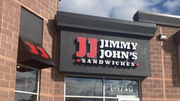Article
How brands can avoid cannibalization in driving growth
How to drive growth is top of mind for brands but in the quest to grow brands can often ignite a cannibalism strategy, something no partner or franchisor welcomes. Experts offered up tips at the recent Fast Casual Executive Summit on how to avoid the scenario.

October 30, 2018 by Judy Mottl — Editor, RetailCustomerExperience.com & DigitalSignageToday.com
Growth of a brand, or the franchise, is a very good thing. But when the growth strategy ends up hurting current stores and locations that's not a very good thing.
But it happens and is often the top worry for a franchisor or brand partner looking to expand and often occurs due to over-saturation — a.k.a. cannibalizing — of the market landscape.
According to Merriam-Webster, cannibalism is defined as the "ritualistic eating of human flesh by another human being." In the world of fast casual brands and franchises it is better defined as consumption of the consumer marketplace by a sibling brand location/franchise.
In essence, damage from cannibalism is why, way back in the day, top QSRs such as Burger King and McDonalds established franchise location/mileage restrictions in building out their brands. Simply, no one wanted two BKs or McD's facing off on competing corners or across the street or even a block or so away. The goal was not to have two locations competing for what basically was one location's marketplace.
But things have changed quite a bit — the numbers of consumers and, relatedly, demand for product and services have increased well beyond what was in play two or three decades ago. Consumers are all about convenience and quick service, so brands want to be within quick and easy reach.
Today it is not hard to step out of a Starbucks in a metro neighborhood, look down the street, and see its familiar logo within clear sight.
The difference? Both are growing and not at the expense of the other, say experts. But it's not an easy balance to obtain.
In fact, avoiding cannibalism — selecting and choosing the right next location — is one of the hardest metrics to forecast and one of the hardest to understand, explained Stephen Polanski, senior vice president, retail and restaurant consulting, at Buxton, which sponsored a panel talk on the topic at the recent Fast Casual Executive Summit. Buxton is a customer analytics provider.
The three-day summit, held at the Hyatt Regency Lake Washington in early October, was run by Fast Casual's parent company, Networld Media Group. The event draws hundreds of restaurant executives interested in learning and networking via interactive sessions.
How close is too close?
The panel speakers included Kevin King, chief development officer, Smoothie King; Micha Magid, co-founder, Mighty Quinn's Barbeque, and Charles Watson, interim CEO and chief development officer, Tropical Smoothie Café.
The big focal point was sharing insight, from both successes and failures, on brand and franchise location decisions — from whether to include ‘protected territories' in franchise agreements to placing legal restrictions in other situations.
As King shared, today's brands and franchisors have something many or nearly none had decades ago — data and data analytics and aren't just relying on a commercial broker for insight and advice.
"There are lots of tools [Such as Buxton]," he said, adding "though there is no substitution for knowing the market and being forward-looking [with the initial development plan]."
"Too many approach a franchise opportunity saying, ‘I found a great site,' but they may be very short sighted in terms of potential growth," he said.
A big focal point, for the brand and the potential new franchisee, said Watson, is whether the brand needs the ‘new market' and answering the questions of "where do we want to go and where are our competitors?"
Having a plan in place, from the start, will help new franchises and older, tenured franchises as the brand grows, he explained. "Alignment with franchisees has certainly helped us grow," he said.
Another big challenge is the new partner or franchisee which has identified a location where there is no competition at all and only sees big growth, noted Magid.
The problem in that scenario very often, he explained, is that there may be no market to tap and that's why competitors have not laid down roots.
"We always ask ourselves two questions [with location decisions]: What is the demand and what problem are we solving," he said.
The many factors involved
Location decision making isn't only about potential revenue and growth but about potential workforce, rent and cost-of-operation costs.
"There are labor intensive factors, which have big ramifications on the P&L, so you must be mindful of all that," added King.
The biggest challenge to overcome for many brands is learning to "say no," to the partner's location idea, said Watson.
"You have to learn to say that important word and then follow up with ‘here are four other options,'" he explained. "We want the franchisee to be successful," he added, nothing he's got the "scars and wounds" from learning the lesson. "There is an art and science to it [franchise development and growth]."
King also advised audience members to be "careful and mindful."
He noted how his brand has 62 locations in New Orleans, which worked given the consumer and revenue density. "But we're not trying to match that somewhere else. That would be foolish."
As new units open his brand is mindful of the impact to existing units and works with tenured franchisees to encourage them to "do something," as all franchises should "keep up with each other."
Older locations seeing new locations pop up should be putting a fresh look onto their location. "They can't do nothing," he said.
It's only human nature for tenured franchisees to get out of sorts if a new location is popping up nearby, said the experts, but that's where brand leadership needs to step in.
"I tell the franchisees that a rising tide lifts all boats, brand power," said Watson.
And expanding the franchise, pointed out King, is a strategy that keeps out competitors.
"It's about building a fortress to make it harder for competitors to come in," he said, adding the brand "must educate, over communicate, help with plans for both new and legacy franchise and follow up" on how business is going.
"You have to learn from what you do [with unit locations] and be part of the discussion and understand the impact," he said. "Don't do it [development] by opportunity. Do it by strategy."
Watson also noted that communicating with existing franchisees about new growth plans is a big key to success.
"Let them know where you are developing," he said, noting that 50 percent of his brand's franchise sales are coming from existing locations.












